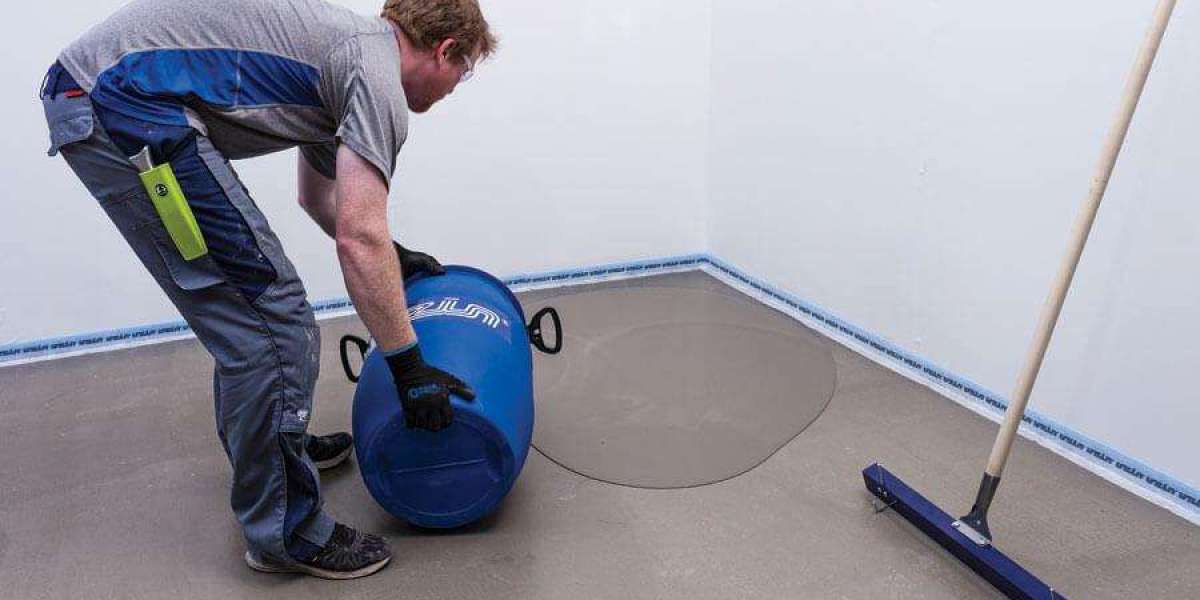When it comes to flooring, a smooth and level surface is essential for both aesthetics and functionality. Uneven floors can cause a range of issues, from tripping hazards to difficulties in installing other flooring materials. Thankfully, there is a solution that ensures a flawlessly level foundation: self-leveling. In this blog, we explore the benefits and process of self-leveling, a remarkable technique that transforms uneven floors into a smooth and professional finish.
Understanding Self-Leveling:
Self-leveling is a technique used to create a level surface on a subfloor by pouring a specialized self-leveling compound. This compound, often a cement-based mixture, spreads out and settles into the uneven areas of the floor, filling in the gaps and creating a flat surface. As the name suggests, the compound self-levels, eliminating the need for extensive manual leveling work.
The Advantages of Self-Leveling:
Flawless Finish: Self-leveling compounds create an impeccably smooth and level surface, which serves as an excellent foundation for various flooring materials such as tiles, hardwood, or vinyl. It eliminates the risk of bumps, ridges, or unevenness that can affect the final appearance of the floor. Time and Cost Efficiency: Self-leveling significantly reduces the time and effort required for floor preparation. It eliminates the need for extensive floor grinding or other labor-intensive techniques to level the surface. The process is relatively quick, allowing for faster installation of the desired flooring material. Versatility: Self-leveling can be used on a wide range of substrates, including concrete, wood, or even existing tiled surfaces. It offers flexibility, allowing you to achieve a level surface regardless of the condition or type of the existing subfloor. Durability: Self-leveling compounds are designed to provide strength and stability to the flooring system. They can withstand heavy foot traffic and ensure that the installed flooring material remains in good condition for years to come.
The Self-Leveling Process:
Preparation: Before applying the self-leveling compound, the subfloor needs to be thoroughly cleaned and free of any debris or contaminants. Any cracks or holes should be filled and repaired as necessary. Primer Application: A primer is applied to the subfloor to enhance adhesion and ensure a strong bond between the compound and the substrate. The primer also helps to prevent the absorption of moisture from the self-leveling compound. Mixing and Pouring: The self-leveling compound is mixed according to the manufacturer's instructions. It is then poured onto the subfloor and spread out using a gauge rake or a specialized self-leveling tool. The compound will naturally flow and level itself, filling in any low areas. Smoothing and Leveling: Once the compound is spread out, a smoothing tool or a long-handled squeegee is used to further distribute and level the compound. This ensures a uniform and flat surface. Drying and Curing: The self-leveling compound requires sufficient time to dry and cure. This can vary depending on the specific product used and the environmental conditions. It is important to follow the manufacturer's instructions regarding drying and curing times.
Conclusion:
Self-leveling is a remarkable technique that allows you to achieve flawlessly smooth and level floors. It offers numerous benefits, including time and cost efficiency, versatility, and durability. Whether you are renovating your home or working on a commercial project, self-leveling can transform uneven subfloors into a perfect foundation for your desired flooring material. By embracing self-leveling, you can create a visually appealing and functional space that will stand the test of time.







